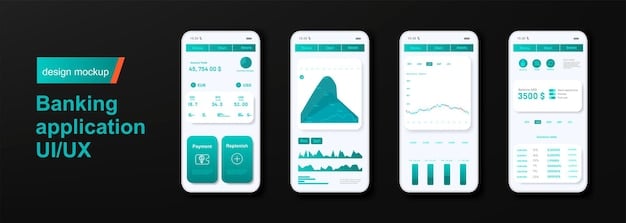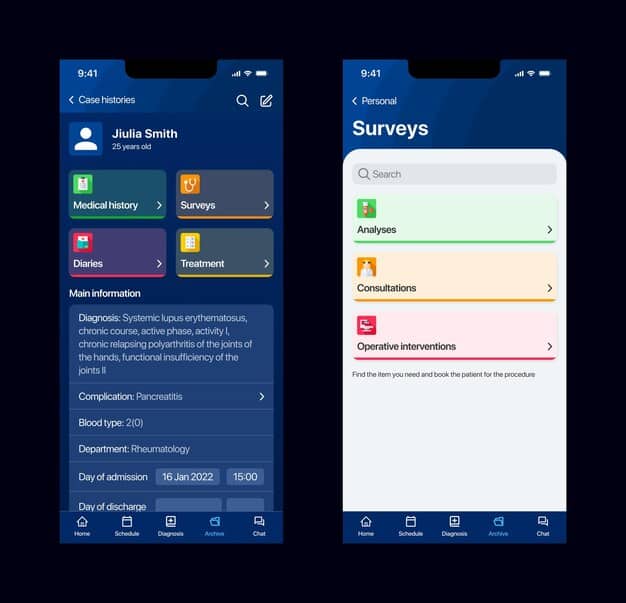Mobile App Store Optimization: Boost App Downloads in the US

Mobile App Store Optimization (ASO) in the US involves strategies to enhance an app’s visibility and downloads within app stores by optimizing keywords, descriptions, and visuals, thereby increasing organic app discovery and user acquisition by 25%.
Are you struggling to get your mobile app noticed in the crowded US app market? Mobile App Store Optimization (ASO): Improve App Visibility and Downloads by 25% with Effective ASO Strategies in the US can be the game-changer you need, potentially boosting your app’s visibility and downloads significantly. Let’s dive into how to make it happen.
Understanding Mobile App Store Optimization (ASO)
Mobile App Store Optimization, or ASO, is the process of optimizing your app’s listing in the app stores (like Apple’s App Store and Google Play Store) to improve its visibility and ranking. Think of it as SEO, but for apps. It’s about making your app easier to find, more appealing to potential users, and ultimately driving more downloads.
Why ASO Matters for App Success
ASO isn’t just a nice-to-have; it’s crucial for app success, especially in the competitive US market. Here’s why:
- Increased Visibility: ASO helps your app rank higher in search results, making it easier for users to find.
- Organic Downloads: By optimizing your app store listing, you can attract more organic downloads without relying solely on paid advertising.
- Cost-Effective: ASO is a cost-effective way to increase app downloads compared to paid advertising campaigns.
- Targeted Users: ASO allows you to target specific keywords and audiences, ensuring that the right users find your app.
In essence, ASO is about maximizing your app’s potential within the app stores, making it a cornerstone of any successful mobile app marketing strategy.

Keyword Research: The Foundation of ASO
Keyword research is the cornerstone of any effective ASO strategy. It involves identifying the terms and phrases that users are most likely to search for when looking for apps like yours. This information then guides the optimization of your app’s title, description, and keywords.
How to Conduct Effective Keyword Research
Here’s a step-by-step guide to conducting keyword research for ASO:
- Brainstorming: Start by brainstorming a list of keywords related to your app. Think about what your app does, who your target audience is, and what problems it solves.
- Competitor Analysis: Analyze your competitors’ app store listings to identify the keywords they are targeting. Tools like Sensor Tower and App Annie can help with this.
- Keyword Tools: Use keyword research tools like Google Keyword Planner, Ahrefs, and SEMrush to find additional keywords and assess their search volume and competition.
- Long-Tail Keywords: Don’t just focus on broad keywords. Long-tail keywords (longer, more specific phrases) can often be less competitive and more targeted.
Remember, the goal is to find the keywords that are most relevant to your app and that have a good balance of search volume and competition. This will help you attract the right users and improve your app’s visibility.
Optimizing Your App Title and Description
Your app’s title and description are prime real estate for ASO. They are among the first things users see when they find your app in the app store, and they play a significant role in influencing search rankings and conversion rates.
Crafting a Compelling App Title
Your app title should be concise, descriptive, and keyword-rich. Here are some best practices:
- Include Relevant Keywords: Incorporate your most important keywords in your app title, but do so naturally and without keyword stuffing.
- Keep it Short: App store guidelines typically limit the length of app titles, so keep it short and to the point.
- Be Descriptive: Clearly communicate what your app does and what problem it solves.
For example, instead of just “Photo Editor,” you might use “Photo Editor Pro – Edit & Filter Photos.”
Writing an Engaging App Description
Your app description provides an opportunity to tell potential users more about your app and its features. Here are some tips for writing an effective app description:
- Start with a captivating introduction that highlights the key benefits of your app.
- Use bullet points or short paragraphs to describe the main features and use cases.
- Incorporate relevant keywords throughout the description, but avoid keyword stuffing.
- Include a call to action, encouraging users to download the app.
A well-written app description can significantly improve your app’s conversion rate and help you attract more users.
The Importance of App Store Visuals
Visuals play a critical role in attracting users to your app. High-quality screenshots and a compelling app icon can make a significant difference in conversion rates.
First impressions are crucial. Your app icon is often the first visual element users see, so it should be eye-catching, memorable, and representative of your app’s functionality.
Strategies for Effective App Store Visuals
- Create visually appealing screenshots that showcase the key features and benefits of your app.
- Use descriptive captions to explain what each screenshot illustrates.
- Consider creating a short video that demonstrates your app in action.
Optimizing app visuals helps to convey your app’s value proposition, increasing conversions.

A/B Testing for ASO Success
A/B testing involves experimenting with different versions of your app store listing to see which performs best. This can include testing different titles, descriptions, keywords, screenshots, and app icons.
How to Conduct Effective A/B Tests
Here’s a roadmap for A/B testing:
- Define Your Goals: What do you want to improve? Downloads, conversion rates, or keyword rankings?
- Choose Variables: Select one or two elements to test at a time (e.g., app title, description, or icon).
- Create Variations: Develop different versions of the elements you’re testing.
- Run Your Tests: Use A/B testing platforms to show different versions of your app store listing to different users.
A/B testing helps you make data-driven decisions about your ASO strategy, reducing reliance on guesswork and intuition.
Monitoring and Adapting Your ASO Strategy
ASO is not a one-time effort; it’s an ongoing process of monitoring, analyzing, and adapting. The app store landscape is constantly changing, and your ASO strategy should evolve with it.
Tools and Metrics
There are several tools and metrics to monitor to gauge the effectiveness of your ASO efforts. App store analytics, keyword ranking tools, and conversion rate tracking can provide invaluable insights.
Regular monitoring and analysis enables you to refine your strategies, ensuring continuous improvement in app visibility and downloads.
| Key Point | Brief Description |
|---|---|
| 🔑 Keyword Research | Identify relevant keywords with high search volume and moderate competition. |
| 📝 Title & Description | Optimize title and metadata description with primary keywords to improve search ranking. |
| 🖼️ App Visuals | Use compelling screenshots and videos to grab user attention and highlight key app features. |
| 🧪 A/B Testing | Experiment with different elements to identify what resonates best with users and optimize accordingly. |
Frequently Asked Questions About ASO
▼
Mobile App Store Optimization (ASO) is the process of optimizing a mobile app’s listing in app stores to improve its visibility. It helps the app rank higher in search results, increasing downloads.
▼
ASO is crucial for boosting app visibility and driving organic downloads. It’s a cost-effective way to reach a broader audience in the app store environment.
▼
Key ASO factors include keyword optimization, title and description enhancement, compelling visuals, and positive user reviews. All must align with the app’s value proposition.
▼
Track your ASO performance by monitoring keyword rankings, download numbers, conversion rates, and user ratings. Use analytics tools for in-depth insights.
▼
The timeline for ASO results varies. Some improvements may be seen in weeks, while others take months. Consistent effort and monitoring are essential for long-term success.
Conclusion
Investing in mobile app store optimization requires a comprehensive strategy that starts with exhaustive keyword research, optimizing your app’s title and description, and presenting visually impressive screenshots and videos. Continuously monitoring and testing your approach ensures that you make data-driven marketing decisions. With a well-executed ASO, your app will not only ascend the search rankings but also significantly boost downloads, maximizing its potential in the competitive US mobile market.





